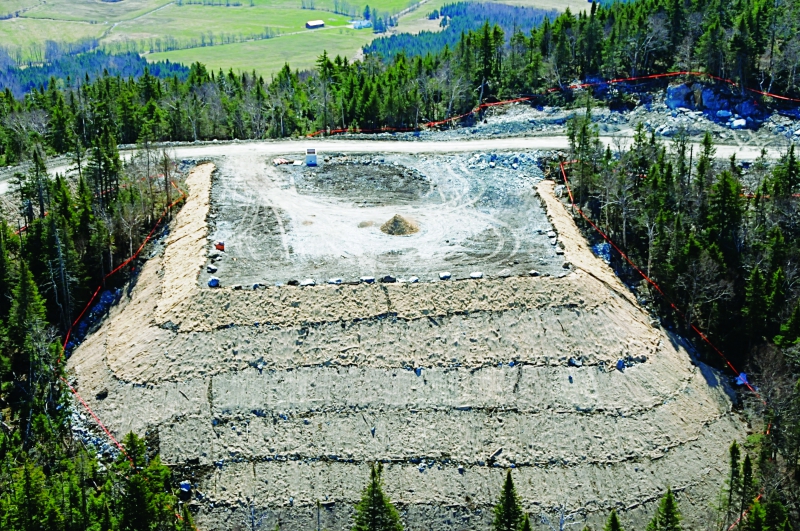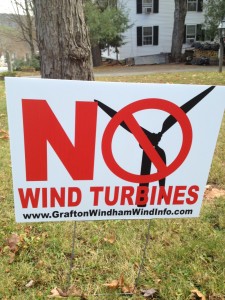Shall Vermont’s mountains be sacrificed in the great game of big wind?

Construction of one pad for one turbine (there are 21 in all) at the 63-MW Kingdom Community Wind Farm on the Lowell Mountain ridge in the Northeast Kingdom of Vermont
By Tom Slayton
Vermont’s mountains and high ridges are under siege once again.
Across the length and breadth of our small, mountainous state, dozens of immense wind towers taller than the 306-foot-tall Bennington Battle Monument are planned or in place.
With official sanction, this state is gradually industrializing and suburbanizing its mountains and high ridges. In the Northeast Kingdom towns of Lowell and Sheffield major wind installations have already destroyed the fragile ecology of high ridges and mountain ranges and compromised the viewshed for miles around.
 Southern Vermont is not immune from this new threat to Vermont’s highlands. A huge industrial-scale project is proposed for the high ridges shared by Windham and Grafton. Iberdrola USA says it wants to place 28 500-foot-tall wind turbines — the largest wind implantation in Vermont — atop those ridges. To permit that to happen would be a colossal mistake. Both towns are rural; both villages are listed on the National Register of Historic Places.
Southern Vermont is not immune from this new threat to Vermont’s highlands. A huge industrial-scale project is proposed for the high ridges shared by Windham and Grafton. Iberdrola USA says it wants to place 28 500-foot-tall wind turbines — the largest wind implantation in Vermont — atop those ridges. To permit that to happen would be a colossal mistake. Both towns are rural; both villages are listed on the National Register of Historic Places.
The landscape there balances the works of man and nature in a way that is pleasant, scenic, and restful. In many ways, these towns represent the best of rural Vermont. We would lose that — permanently — should these immense industrial wind towers be built.
This is not a matter of simple aesthetics. Vermont’s one drawing card in the battle for tourist dollars is its incomparable countryside. Compromise that, as these large wind installations do, and we’ll lose the battle. Our tourist economy will suffer.
These installations also will do significant environmental damage, impacting fragile, high-altitude ecosystems and destroying the forest integrity — “habitat connectivity” to biologists — that is vital for wildlife populations to thrive.
In fact, Vermont is not a very good location for wind generation. A recent issue of National Geographic shows us prime wind generation areas in the United States are off the Atlantic coast and in the wide, flat Midwest.
Furthermore, the demand for wind power in Vermont is already maxed out. Executives of both Green Mountain Power and Vermont Electric Cooperative are on record saying that the transmission grid is close to being unable to accept more wind-generated electricity.
Thus, the only real beneficiaries of these huge wind installations are the developers proposing them.
Global warming is a fact and we must combat it. But to allow a distinctly mediocre power source to destroy our state’s signature feature, and compromise a natural, benign, world-class carbon sequestration system — which is what mountain forests are — is utterly foolish.
There are better ways to reduce our carbon footprint and better ways to generate the power we require. We must focus our energy and intelligence there rather than on methods that benefit only large corporations — and that permanently damage our countryside.
Journalist Tom Slayton is an editor and writer.





















































